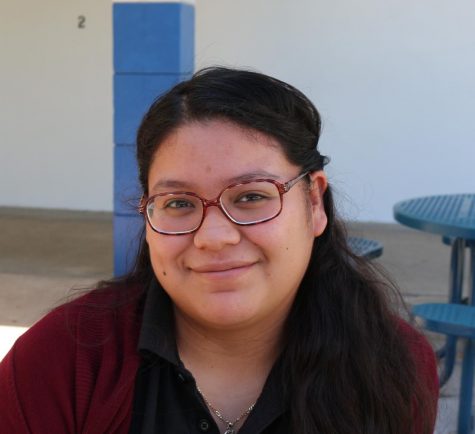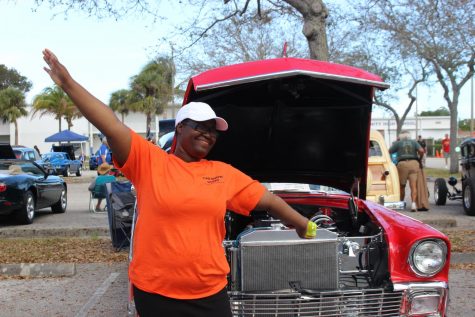Foreign language: Spanglish
ETHNICITY: (from left) Anthony Lopez , Deilyn Mendez-Lopez, and Gregory Dozier are three out of the many Hispanic students who speak the Spanglish language
To be a Hispanic and not know how to speak Spanish properly, or how to speak Spanish at all, is considered to be disappointing in some Spanish-speaking countries. The fact that the primary language in this country is English has caused the hybrid Spanglish to be born.
Spanglish is the mixture of Spanish and English. It’s when you use Spanish words and English words in a sentence because you don’t know the proper terminology for the word in the language or you’re used to speaking both languages. An example would be “Querio un jamberger con cheese fries” (I want a hamburger with cheese fries).
One also gets used to saying certain words like cash instead of saying dinero. One might say, “Yo solo tengo cash” (I only have cash), instead of saying “yo solo tengo dinero.“
Words have also been mashed up, such as the word “parquear” which in English is to park a vehicle. The correct word in Spanish would be “estacioner.”
There are words in Spanish that don’t have an English translation; you’d have to describe it. An example would be the word “estrenando,” which means first time wearing it. It would be used as “para año nuvo voy estar estrenando un nuvo vestido” (I will be wearing a new dress for New Year’s).
There are words in Spanish that are the same but with a different meaning depending on where you’re from, like the word “torta.” In Mexico it’s a kind of sandwich, but in other countries a “torta” is a kind of bread. It’s just like in English when we say chips; we mean thin sliced potatoes that are crunchy, but in England chips are french fries.
As can been seen, Spanglish has become its own language. It’s not proper English, nor proper Spanish, but a combination of both.
In both languages, words may not have a proper translation, or words may mean something different.

Hi! My name is Deisy and I am a senior in the journalism academy I enjoy reading and writing. When it comes to books I love reading the classics one...

Hi, I'm Ruth (also called Ruthie), a senior in the Medical Academy. A little about me is I love taking photos, and I'm a very active person, so when people...



Pientka • Mar 16, 2018 at 8:48 am
I love it! Great job describing the how and why it came to be used!